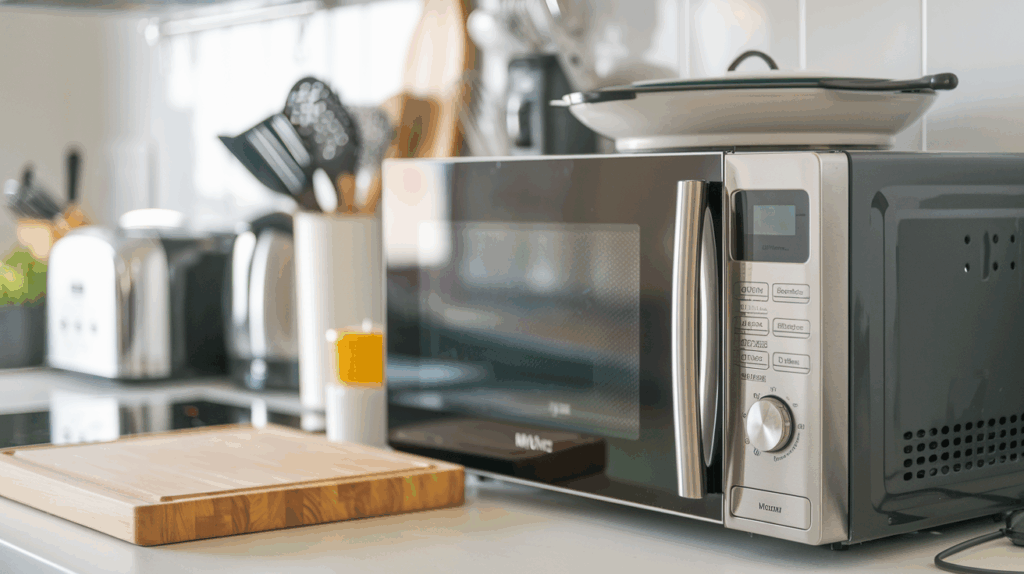
Microwaves are a convenient kitchen essential, making meal preparation and reheating fast and efficient. However, when a microwave shuts off before finishing its task, it can leave you frustrated with partially cooked or cold food. Understanding the possible reasons for this issue can help you address the problem effectively.
Possible Reasons for a Premature Shutoff
Here are the most common causes of a microwave shutting off unexpectedly:
- Door Switch Alignment Issues: Misaligned switches can interrupt the microwave’s operation.
- Faulty Door Switches: Damaged or malfunctioning switches may cause the unit to shut off.
- Tripped Thermal Fuse: This safety mechanism activates if the microwave overheats, cutting off power to prevent damage.
- Defective Control Board: Electrical issues in the control board can interrupt normal functioning.
- Magnetron Failure: Problems with the component responsible for generating heat can stop the microwave from working properly.
How to Identify Symptoms of a Faulty Microwave
Understanding the symptoms can help you pinpoint the problem. Look out for these issues:
- The microwave stops mid-cycle without warning.
- Food is only partially cooked or reheated unevenly.
- The microwave displays error codes or unusual messages.
- A burning smell or sparks are observed during the operation.
- The microwave’s fan or light turns off unexpectedly.
Safety Precautions for Microwave Repairs
Microwaves contain high-voltage components that can be hazardous. Follow these safety measures when working on your appliance:
- Unplug the Microwave: Always disconnect it from the power source to avoid electrical shock.
- Discharge the High-Voltage Capacitor: This step is critical to protect yourself (instructions below).
- Avoid Operating Without the Cover: Never power the microwave on without its outer case securely in place.
- Use Insulated Tools and Gloves: These provide additional protection while testing or repairing parts.
- Inspect All Parts: Check that all components are in good condition before reassembling.
How to Safely Discharge a Capacitor
Important: High-voltage capacitors inside a microwave can store dangerous amounts of electricity, even when unplugged. Follow the steps below carefully. If you are uncertain, consult a professional.
- Unplug the Microwave: Disconnect it from the power source.
- Use an Insulated Screwdriver: Choose a tool with a well-insulated handle to protect against electric shock.
- Discharge the Terminals:
- Gently touch the screwdriver blade to one terminal of the capacitor.
- Slide it toward the second terminal, holding it there for a few seconds. This may produce a loud ‘POP’ as the charge is released.
- Repeat for Additional Terminals: For capacitors with three terminals, follow the same process for each terminal and the metal chassis.
How to Troubleshoot a Microwave That Shuts Off After a Few Seconds
Here are the steps to identify and fix the issue causing your microwave to stop running prematurely:
Step 1: Check the Door Switches
Microwave door switches detect whether the door is closed and allow the magnetron to function. If the door is not fully closed, the switches cut power as a safety precaution.
- Inspect the alignment of the door’s pins, brackets, and levers. Adjust or tighten components if they do not align properly with the door switches.
- Use a multimeter to test the door switches for continuity:
- If continuity is detected, the switch is functional.
- If no continuity is detected, replace the faulty switch.
- Refer to the owner’s manual for specific details about the door switch configuration.
Step 2: Inspect the Thermal Fuse
The thermal fuse cuts power to the microwave if it overheats. Common causes include a failing magnetron, issues with door switches, or arcing food.
- Locate the thermal fuse near the magnetron.
- Use a multimeter to check for continuity:
- If continuity is detected, the fuse is functional.
- If no continuity is detected or the multimeter shows an open line, replace the thermal fuse.
Step 3: Examine the Magnetron
The magnetron generates the microwave energy needed for cooking. If it fails, the microwave may shut off prematurely.
- Inspect the magnetron for visible damage and listen for unusual buzzing sounds when attempting to run the microwave.
- Test the magnetron with a multimeter for resistance:
- If resistance is detected, the magnetron is functional.
- If there is no resistance or the reading shows an open line, replace the magnetron.
- Avoid using the microwave while empty to prevent damage to the magnetron.
Step 4: Inspect the Control Board
The control board manages the microwave’s functions and communicates with its components. A malfunctioning board can cause random shutdowns.
- Inspect the control board and wiring for physical damage, such as burn marks or cracks.
- Replace the control board if any damage is found.
How to Extend the Life of Your Microwave
Preventive maintenance can help your microwave function properly for a longer time. Follow these tips:
- Keep the Interior Clean: Wipe spills and splatters immediately to prevent residue buildup that can affect performance.
- Avoid Overloading: Do not place overly large or heavy items in the microwave, which can strain its components.
- Use Microwave-Safe Containers: Ensure containers are labeled microwave-safe to prevent damage to the appliance and potential hazards.
- Check the Ventilation: Ensure vents are not blocked to avoid overheating.
- Inspect the Door Seal: Regularly check the seal to confirm it is intact and free of cracks.
What’s Next?
Dealing with a microwave that shuts off mid-cycle can be annoying, but now you know what could be causing it and how to fix it. From simple door switch problems to more serious magnetron failures, you’ve got a clear idea of what to check and how to fix each issue.
The trick is to figure out the problem early and decide when to call a pro. Keep your microwave clean, use it properly, and follow some basic tips to prevent future issues. If it happens again, you’ll be ready to fix it yourself or know when to get help.
